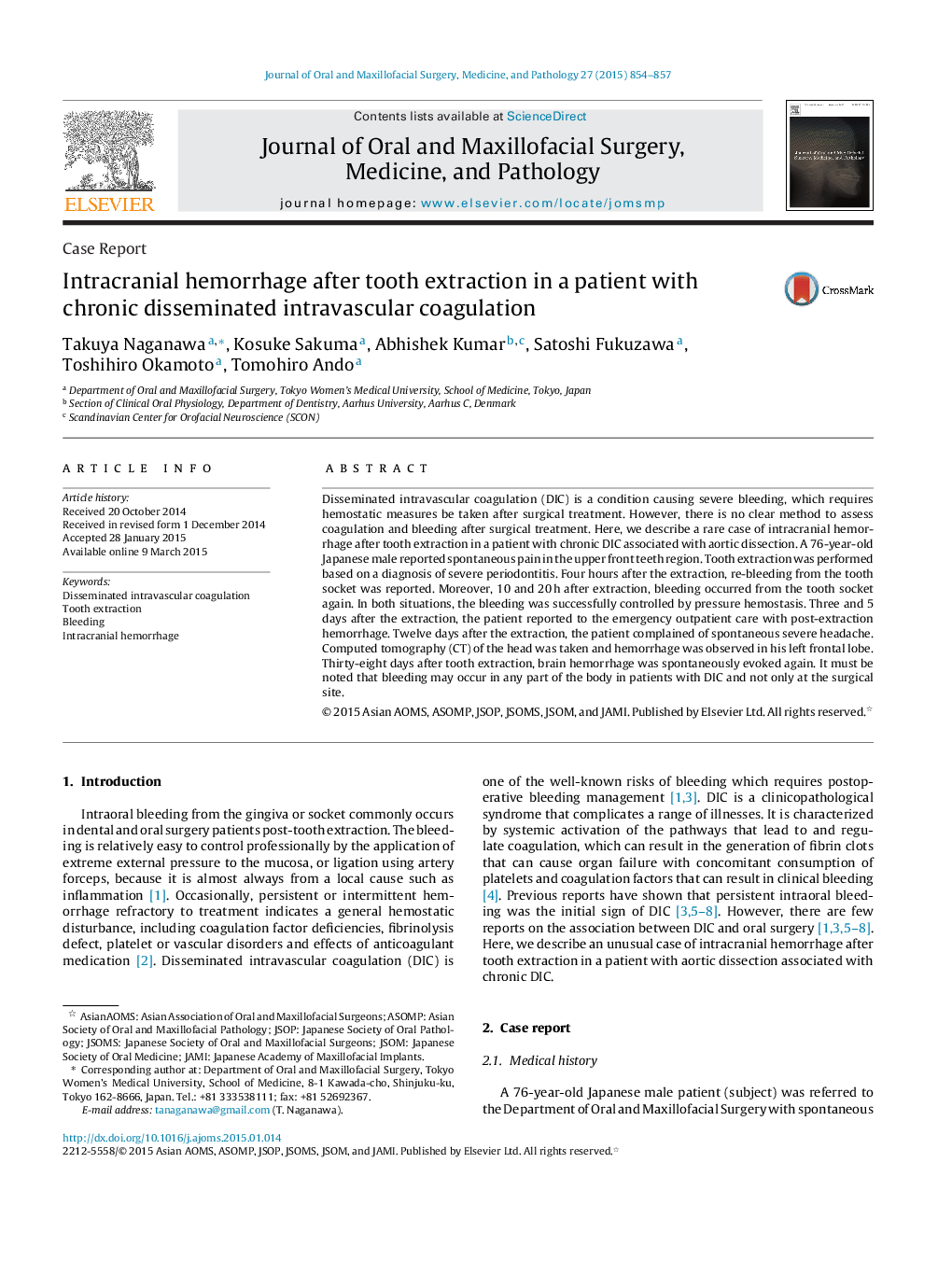| Article ID | Journal | Published Year | Pages | File Type |
|---|---|---|---|---|
| 3160398 | Journal of Oral and Maxillofacial Surgery, Medicine, and Pathology | 2015 | 4 Pages |
Disseminated intravascular coagulation (DIC) is a condition causing severe bleeding, which requires hemostatic measures be taken after surgical treatment. However, there is no clear method to assess coagulation and bleeding after surgical treatment. Here, we describe a rare case of intracranial hemorrhage after tooth extraction in a patient with chronic DIC associated with aortic dissection. A 76-year-old Japanese male reported spontaneous pain in the upper front teeth region. Tooth extraction was performed based on a diagnosis of severe periodontitis. Four hours after the extraction, re-bleeding from the tooth socket was reported. Moreover, 10 and 20 h after extraction, bleeding occurred from the tooth socket again. In both situations, the bleeding was successfully controlled by pressure hemostasis. Three and 5 days after the extraction, the patient reported to the emergency outpatient care with post-extraction hemorrhage. Twelve days after the extraction, the patient complained of spontaneous severe headache. Computed tomography (CT) of the head was taken and hemorrhage was observed in his left frontal lobe. Thirty-eight days after tooth extraction, brain hemorrhage was spontaneously evoked again. It must be noted that bleeding may occur in any part of the body in patients with DIC and not only at the surgical site.
